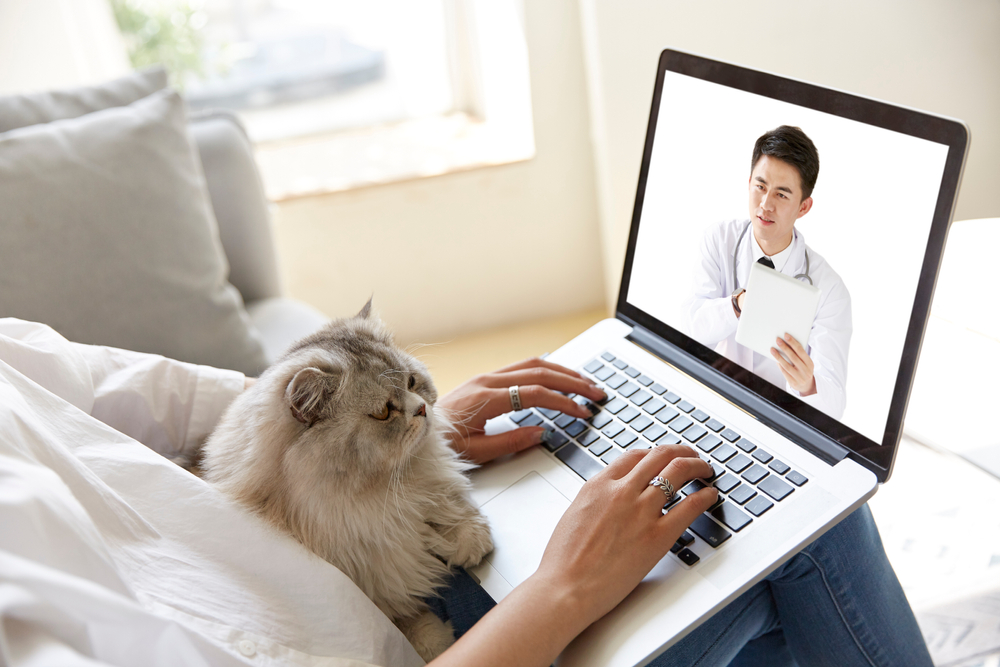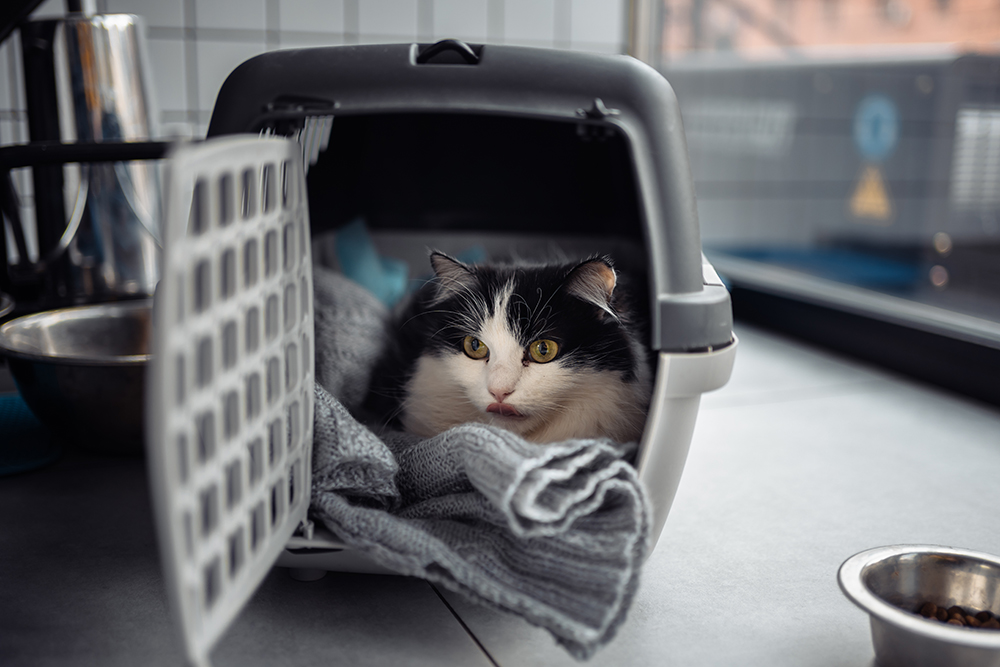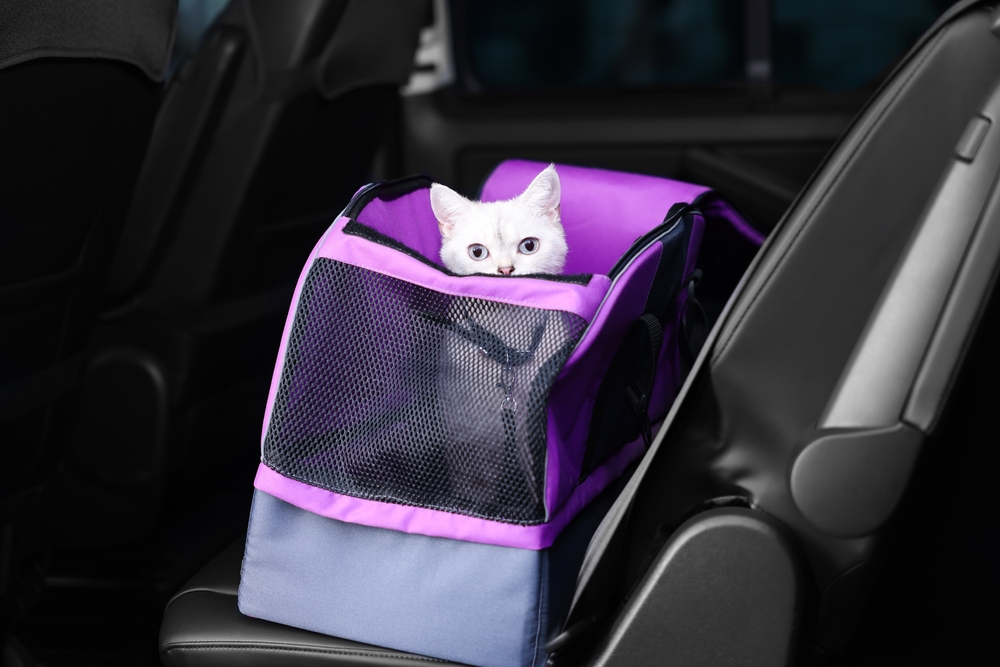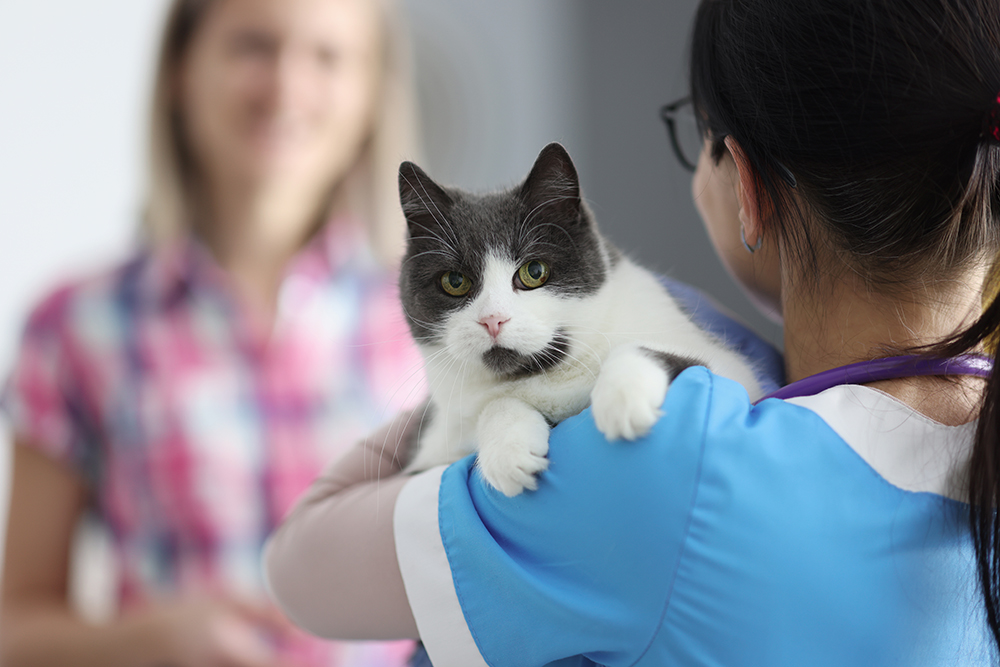The information is current and up-to-date in accordance with the latest veterinarian research.
Going to the vet’s office isn’t much different than seeing your doctor. You want to make the most out of your time with minimal hassle. Your veterinarian also wants to use their time effectively to help you and your animal with the problem at hand. After all, taking your cat to the clinic is never easy. Cats often find the whole process of visiting the vet very stressful, so being as efficient as you can and being prepared for your trip can make a big difference.
Cats don’t always make it easy for their owners. They are masters at hiding signs of being unwell which often means that cats are really quite sick by the time their owners realize there is a problem. We’ve put together some tips for keeping your vet visit as smooth and efficient as possible so that you get the information you need and your cat gets the treatment they need.


The 11 Tips for Being Efficient at the Vet’s Office
1. Not Everything Warrants a Physical Trip to the Vet
Throughout your cat’s life, they should visit the vet for an annual exam to update vaccinations and do any necessary health tests. An in-person visit is essential for this. However, every cat owner understands the stress their feline companions experience when going to the clinic. So, it’s helpful to know that not all trips warrant a physical trip to the vet. Thankfully, teletriage sites like PangoVet exist, where you can schedule an online meeting with a veterinarian. This can be extremely helpful when you have minor questions about, for example, your cat’s behavior, but it can also be useful in deciding if your cat’s problem warrants an in-person vet visit or not.
It’s worth noting that online virtual exams aren’t a substitute for an in-person visit, but in some cases they are very useful. If your cat requires hospitalization or surgery, is experiencing a medical emergency or requires tests, you will need to take them to your vet (or an emergency clinic), but for basic questions about your animal, sites such as PangoVet can be extremely useful. Remember that in most countries and states, your animal will have to be “under the care” of a veterinarian for them to be prescribed medications. This means your pet has to have been seen by the vet, in person, within the last 6 months. Nevertheless, virtual exams can offer a viable option for veterinary advice in some cases.
💛 😺 Speak To a Vet Online From the Comfort of Your Couch!

If you need to speak with a vet but can’t get to one, head over to PangoVet. It’s an online service where you can talk to a vet online and get the personalized advice you need for your pet — all at an affordable price!
2. Make a List of Your Cat’s Signs
Your vet uses your observations of your cat to help signpost what might be going on. Your veterinarian is at a disadvantage when you bring your pet to the clinic because your cat undoubtedly acts differently away from home. Their stress is in overdrive. Therefore, the information you can provide your vet is critical. Many signs are non-specific, such as loss of appetite or lethargy, but they help your vet begin to build up a clinical picture with valuable details.
Besides, you know what’s normal and abnormal for your kitty. Write your concerns down to give your vet as much info as possible. It will save time at the vet and will ensure you don’t miss any of the details. Having all the details from the start will help your vet reach a diagnosis and treat your pet faster.
3. Anticipate the Questions Your Vet May Have
Appetite, activity level, and litter box habits are things your vet will undoubtedly ask you to detail. Make their job more efficient by having the answers ready. Anticipate other questions based on the complaint. If your cat is vomiting, note how often and the consistency. If your cat loses their appetite, notice how long it’s been going on and whether they eat at all or just their favorite foods.

4. Write Down Your Questions
You undoubtedly have questions and concerns. Do yourself a favor and write them down so that you don’t forget anything important. Remember that you have your vet’s undivided attention during your appointment. Get the most out of your time. No question is silly. It’s better to get all the facts so that you understand what is wrong with your cat and the plan to make things better.
5. Gather Any Necessary Medical Records and Medications
Your vet needs the complete picture to understand what is going on. Ensure you have your cat’s vaccination record, and if your cat takes any medication, ensure that you know which medication, how much and how often they take it. If this is your first visit to a new vet, it is worth calling the practice ahead of your appointment to make sure they have received your cat’s medical history from your previous vet’s office.

6. Get Your Cat Used to the Carrier Before Going to Your Appointment
You’ll need to transport your cat to the veterinary clinic in a carrier. As a general rule, cats are highly suspicious of cat carriers, and the best way to reduce this suspicion is by getting your cat used to the carrier ahead of needing it. Have your cat carrier in the living room so that your kitty can sniff and investigate it on their own time. Feed your cat treats in the carrier on a normal day so that they start to find the carrier less stressful. When you are planning to put your cat into the carrier to transport them to the vet clinic, we suggest putting something that has your cat’s scent on it, like a favorite blanket or towel inside it to make it seem more familiar. There are even pheromone sprays that can help your kitty relax more easily.
7. Purchase a Good Quality Cat Carrier
Cat carriers come in all shapes and sizes. Ensure you have a cat carrier that is large enough for your cat and that is made of hard plastic, as these are much more secure. Carriers that have a removable lid are ideal so that your cat can be examined while remaining in the comfort of their box. Being able to remove the lid also means that a frightened cat doesn’t have to be dragged out of the door of the carrier for their examination.

8. Allow Your Cat to Use the Litter Box Before You Go
Give your kitty time to use the litter box before your appointment. Your cat may soil the carrier, making it unpleasant and more time consuming for everyone. Remember that felines are clean animals, so sitting in a dirty carrier is undoubtedly uncomfortable and unsettling to them. Giving your cat time to use the litter tray before they go into the cat carrier can help avoid this situation.
9. Consider Using a Pheromone Spray
Cats in general don’t like being out of their routine, and they certainly don’t like going in a car. The noise, the smell and the unpredictability of the situation makes a cat very unsettled. One study found that using a synthetic feline facial pheromone product can reduce stress during transport. This can mean that your cat arrives at the vet’s practice in a more relaxed state, which in turn can help your vet carry out a useful clinical examination. Cats that arrive at the vet’s practice in an already stressed state can be much more difficult to handle.

10. Complete Any Online Forms Ahead of Time
If your vet has an app or online system, check out the site for any forms you may need to complete before your visit. Some clinics ask clients to fill out forms before annual exams to ensure their records are up to date. You can save a lot of time by completing them before your appointment and having hard copies ready if necessary. The administrative staff will appreciate your efficiency.
11. Arrive Early for Your Pet’s Appointment
The administrative staff strives to schedule appointments with enough time based on the issue. That may mean little leeway between time slots. Get the most out of your allotted time by arriving a few minutes early for your appointment. This will allow your cat to acclimatize a little before their consultation starts. If there is time, vets often like to give cats time alone in an exam room to settle down after the ride to the clinic, so take advantage of it.



Final Thoughts
Being prepared before a vet trip can really improve efficiency and allow your vet to do their job as well as they can. While you can’t remove the disruption and discomfort to your cat entirely, you can make the process go as quickly and efficiently as possible with simple measures. Some optimize your vet’s time by providing information and anticipating questions. Others prepare your kitty for the ordeal. All make the best of an unpleasant situation.
Featured Image Credit: Stock-Asso, Shutterstock
Source link
Facebook
Pinterest
Twitter
LinkedIn

